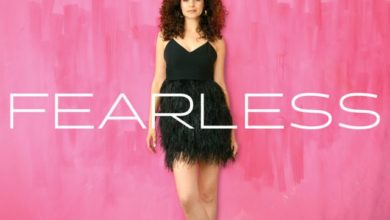Art Basel Miami Beach hosts record number of galleries on 20th anniversary

Miami, Nov 29 (EFE).- Art Basel Miami Beach – the Americas’ biggest art fair – on Tuesday began celebrating its 20th anniversary, hosting a record number of galleries and with a growing reputation that has only served to draw visitors from all around the world.
Although the 2021 edition of the fair was special in serving to reestablish the in-person aspect of the event after the 2020 fair was canceled due to the Covid-19 pandemic, this year Art Basel has recovered its frenetic rhythm with its displays of contemporary art and the record-breaking presence of 282 galleries from 38 countries.
The prevailing atmosphere on Tuesday at the inauguration of the fair’s 20th anniversary edition at the Miami Beach Convention Center was one of enthusiasm and partying, giving the impression that Art Basel has not only a strong presence on the world art map but is also an unparalleled large attendance event.
The sunny sister of the Art Basel fair in Switzerland has made Miami and its vicinity a mecca for other satellite fairs and hundreds of activities, exhibitions and artistic events.
Fair director Marc Spiegler told EFE at the Art Basel Miami Beach opening that this was an extraordinary moment. Twenty years ago, he said, the world viewed South Florida very skeptically, given that it was the era of the “Miami Vice” television series, and it seemed impossible that the fair would transform itself into what it has become.
But, right from the start “it flourished” and was on the artistic map, a truly undeniable fact, he emphasized on a day when admission was by invitation only, with the doors opening to the general public from Dec. 1-3.
Since its inception in 2002, the fair has been a colorful spectacle and an irresistable meeting place for collectors, museum directors, gallery owners, art dealers and the public from all over the world.
It’s a fair that, in the words of its global director, has figured out how to evolve to be more “multicultural” and to better represent the variety in society with the inclusion of more galleries from Asia and Africa.
One of the most recognized areas of the fair, Meridians, is being curated by Magali Arriola, the director of Mexico City’s Tamayo Museum, a zone where some 20 large-scale artworks by emerging artists are on display.
Among the most outstanding works at Meridians is a huge painting of geometric shapes on canvas by Peruvian indigenous artist Sara Plores, titled “Pei Kene 1” (2022), done with natural pigments from the Amazon jungle extracted from the achiote bush, from the curcuma plant and from almonds.
Flores told EFE that the geometric image she and her family painted is based on spiritual visions produced after ingesting “ayahuasca” – a psychoactive brewed drink traditionally used both socially and as a ceremonial or shamanic spiritual medicine among South America’s indigenous peoples – and that looking for the trees from which to extract the paint colors is getting more and more difficult due to excessive lumbering activity in the jungle.
“It’s a lot of work. We use colors extracted from three trees and a special river mud, but each time we have to walk farther to find them. The woodcutters have gotten to all the trees,” Flores said.
Beside Flores’ exhibition space, Colombian artist Maria Jose Arjona is displaying her “Silla,” a straightback chair suspended horizontally from the ceiling and occupied by a person to express “the effect of time on the body as a type of sculptural process.”
Also, there is “Munafinda,” by Cuba’s Jose Bedia, a metal, mud, acrylic and canvas creation with the totemic and ritualistic look of African tribes.
At Meridian, US artist Christopher Myers is also displaying his work titled “Let The Mermaids Flirt with Me” 2022), an octagonal structure that creates “the effect of a chapel” with interior windows.
In strolling through the fair’s Survey section and stopping at the gallery of Spain’s Jose de la Mano, exhibiting for the first time at Art Basel Miami Beach, one notices the work by Catalan artist Aurelia Muñoz (1926-2011), who is well-known for her textile creations, mainly macrame.
“We’re rescuing forgotten Spanish artists. And Aurelia Muñoz is paradigmatic, very important in the 1970s and ’80s and then forgotten until New York’s MoMA museum bought five of her works,” Jose de la Mano, the owner of the Madrid gallery owner, told EFE.
The Mitterrand gallery has on display the work of Cuban painter and sculptor Agustin Cardenas (1927-2001), who moved to Paris in 1955 and became part of the surrealist movement, as his son Andre, who is also exhibiting his own work, explained to EFE.
In moving through this year’s Art Basel Miami Beach, one can detect a return to the painting trend with several works by French painter Francis Picabia (1879-1953) being exhibited in Galerie 1900-2000, which share space with grand masters of the 20th century like Robert Delaunay (1885-1941).
In the Nova section (for emerging artists) the K Art gallery has urban art on display, pieces loaded with the sarcasm and strong colors of Robyn Tsinnajinnie, including works such as “Vasectomy Now” and “Cold Water.”





